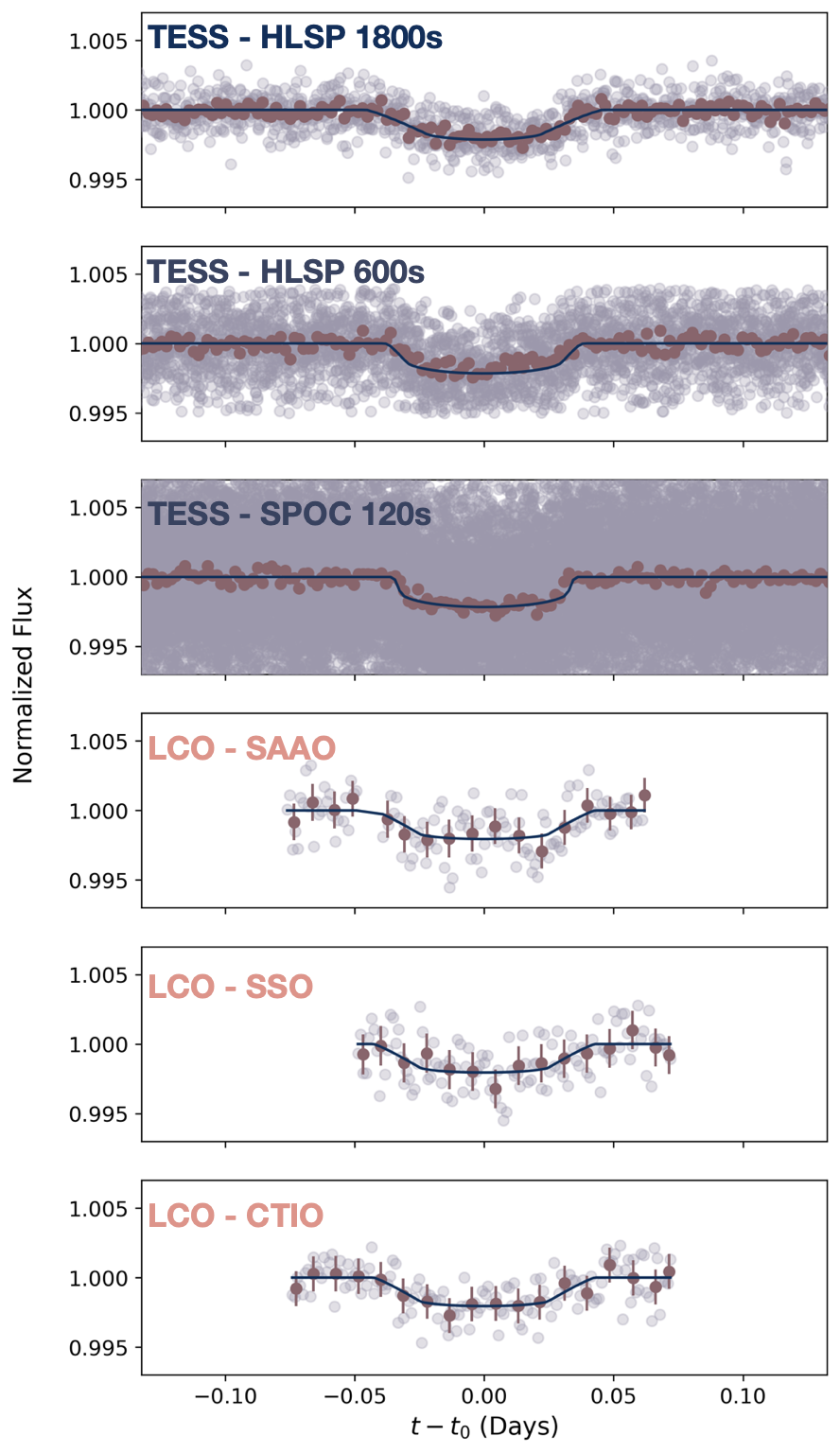Research Interests
Transit Timing Variations
Planets in compact multi-planet systems can exhibit transit timing variations (TTVs), whereby close gravitational interactions change a planet's orbital period. This causes the planet to transit earlier or later than expected. TTVs are a signature of gentle, co-migration of planets through the disk, as this motion would cause planets to be captured in the resonant orbits that give rise to TTVs. Therefore, constraining a system's TTVs gives further insight into how that system was formed. It also is a valuable tool for discovering non-transiting planets, and for measuring masses of planets when radial velocity measurements are not possible.
I use photometry from ground- and space-based observatories to search for TTVs in multi-planet systems found by the Kepler and TESS missions. Using N-body simulations, I then model the TTVs to derive orbital elements and obtain a comprehensive view of system architectures.
Ultra-Hot Neptunes

Giant planets play an important role in shaping the architectures of their host systems. It is therefore important to understand how they evolve, especially when they migrate too close to their host star. Neptune-sized planets on ultra-short period orbits (ultrahot Neptunes) may demonstrate rare survivors of this case, having been giant planets whose cores were exposed through tidal interactions with the host star.
Using radial velocities from ESPRESSO and HARPS, as well as photometry from TESS and LCOGT, I report the discovery of the fourth-known ultrahot Neptune, TOI-3261 b. Through mass loss and thermal evolution simulations, I assert that TOI-3261 b belongs to a population separate from terrestrial USPs, and could have started out as large as a giant planet. However, the origins of ultrahot Neptunes are still unclear, necessitating follow-up to solidify the link between ultrahot Neptunes and progenitor Hot Jupiters.
Check out the NASA Discovery Alert for TOI-3261 b here!
Follow-Up of TESS Multi-planet Systems
I am also interested in large-scale follow-up of multi-planet systems found by TESS. Although Kepler was sensitive to a wider range of stellar magnitudes, the multi-planet systems found by TESS are generally more amenable to follow-up observations due to their brighter host stars. As joint TTV and radial velocity observations would offer absolute masses of transiting planets, this combined-technique approach would afford the highest precision estimates of planet parameters.